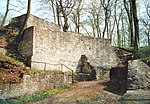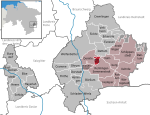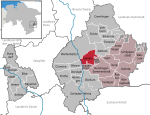Asse (hills)
Braunschweig region geography stubsHill ranges of Lower SaxonyNuclear technology in GermanyWolfenbüttel (district)

The Asse is a small hill range in the district of Wolfenbüttel in southeastern Lower Saxony with a median height of 200 metres ASL; the highest elevation is the Remlinger Herse with a height of 234 m. There are more than 600 different plants found here; the Asse is mostly covered by trees. It has been inhabited since the 6th millennium BC by farmers coming from the Danube region. For several hundred years, salt has been mined in Asse. One of these mines, Schacht Asse II, is now used to store low- and medium-grade radioactive waste produced by medicine and nuclear power plants.
Excerpt from the Wikipedia article Asse (hills) (License: CC BY-SA 3.0, Authors, Images).Asse (hills)
Asseweg, Samtgemeinde Elm-Asse
Geographical coordinates (GPS) Address Nearby Places Show on map
Geographical coordinates (GPS)
| Latitude | Longitude |
|---|---|
| N 52.140277777778 ° | E 10.65 ° |
Address
Rogenstein – Bildung im Wüstenklima
Asseweg
38329 Samtgemeinde Elm-Asse
Lower Saxony, Germany
Open on Google Maps






